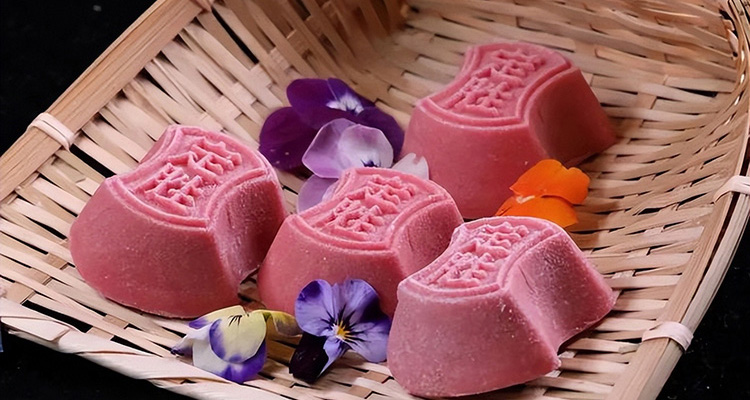Dingsheng Cake: A Lucky Jiangsu Snack You Must Try!
In Jiangsu province in China, there’s a soft, sweet treat shaped like a gold ingot.
This is Dingsheng cake, a lucky cake from Jiangsu cuisine.
Take a bite and feel happiness and sweetness all at once.
If you visit Jiangsu, trying Dingsheng cake is a must.
It’s not just any traditional dessert, but one full of culture and meaning.
1. Origin & History of Dingsheng Cake
Dingsheng cake dates back to the Ming and Qing dynasties.
It is tied to the exam culture in Jiangnan (south of the Yangtze).
Legend says students ate this cake before exams to pray for success.
Later it spread among common folks as a Chinese pastry.
It has been passed down for centuries, especially in Suzhou and Nanjing.

2. Cultural Significance of the Lucky Cake
For people in Jiangsu, Dingsheng cake is more than a snack.
At exams, festivals, or celebrations, they gift or eat it.
It symbolizes good luck, victory, and success.
It shows the Jiangnan lifestyle and hope for a bright future.
This auspicious cake is a small messenger of blessings.
3. Ingredients & Flavor Profile
The main ingredients are high-quality glutinous rice flour and red bean paste.
Sometimes a bit of sugar and vegetable oil are added.
The glutinous rice gives soft, stretchy texture.
The red bean paste is smooth and dense.
Altogether, it’s simple and natural, a pure Jiangsu dessert flavor.
4. How to Make the Glutinous Rice Cake
The process is detailed and hands-on.
Mix rice flour and water, knead to a dough.
Wrap the red bean paste in the dough.
Shape it like a gold ingot .
Steam it in a steamer over medium heat for 15–20 minutes.
When done, the cake becomes transparent, soft, and tender.
Every step is manual, showing the skill of traditional dessert making.

5. Texture & Taste Experience
Dingsheng cake has a chewy, soft texture that melts in your mouth.
You’ll taste a gentle sweetness and bean paste richness.
The outer layer is slightly bouncy, inside is smooth and sweet.
The flavor is light, never greasy, leaving you wanting more.
6. Best Way to Eat the Cake
The classic way is to eat it directly, straight from steaming.
Hot and fresh is when Dingsheng cake feels best.
You can pair it with a cup of green tea, like Longjing or Biluochun.
Tea and cake complement each other—sweetness and freshness.
This is a simple yet elegant Chinese sweet snack style.
7. Where to Try the Real Deal
You can try Dingsheng cake at:
- Old pastry shops on Guoqian Street in Suzhou
- Snack street in Nanjing’s Confucius Temple area
- Traditional shops in Wuxi’s Huishan ancient town
Expect to spend around 10–30 RMB (very affordable).
Order by saying “one Dingsheng cake”, fresh steam it for you.

8. Tips for Visitors
In English, it’s called “Dingsheng Cake”.
The best time to eat it is right when it’s steamed.
During festivals like Dragon Boat or Chinese New Year, special versions appear.
Eat it while warm—if you leave it too long, it may harden.
9. Easy Home Version for Beginners
You can try a simple version at home.
Mix glutinous rice flour with water to form dough.
Wrap store-bought red bean paste inside.
Shape into small ingot forms.
Steam for 15 minutes.
Use honey or syrup instead of sugar if you like.
It won’t be as refined, but it’s fun to try your own Jiangnan dessert.
Go ahead and try this lucky Jiangsu snack!
It’s more than just a cake—it carries blessings and culture.
Add it to your Jiangsu travel must-eat list.
Let the soft, sweet Dingsheng cake be your sweetest memory of Jiangnan.


